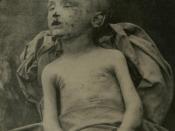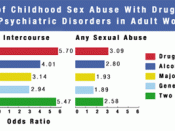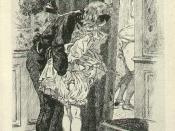Child abuse takes on various different forms, including physical abuse, sexual abuse, neglect, and emotional. Physical abuse refers to all types of mistreatment that result in physical injuries. Sexual abuse also can cover a variety of abusive behaviors, ranging from exposure or touching to, incest, or rape. Neglect is defined as any situation in which a child receives no care by a parent or other primary caregiver or receives care that is below acceptable community or professional standards. Emotional abuse, which may occur alone or with any of the other forms of abuse mentioned, can also have profound long term effects for the child. There is a vast amount of research available on all of these forms of abuse, but for the purpose of this paper I will focus my attention and research on the effects of childhood sexual abuse.
In the last two decades, the concern about the sexual abuse of children in the United States has intensified.
During the 1980's, researchers, professionals and the general public came to realize the magnitude of this problem of sexual abuse. Initially, there was primarily a concern for girls, but over time there became more acknowledgment of a vast amount of boys that were also victimized (Turner, 1996). Currently in the United States, one out of three females and one out of five males have been victims of sexual abuse before the age of 18 years (Dominguez, Nelke, and Perry, 2002). Children who are sexually abused have many harmful consequences that remain throughout their lives. Many of these children will have various short term and long term problems.
Childhood sexual abuse can be defined in two ways; physical contact (i.e. fondling, either attempted or completed vaginal, oral, and anal intercourse), or non-contact (i.e. exhibitionism, masturbation, and exposure to sexually explicit...



Good work!
You must have spent a lot of time on this paper because this shows striking features and specific ideas. A wide vocabulary and it has little repetition.
5 out of 5 people found this comment useful.